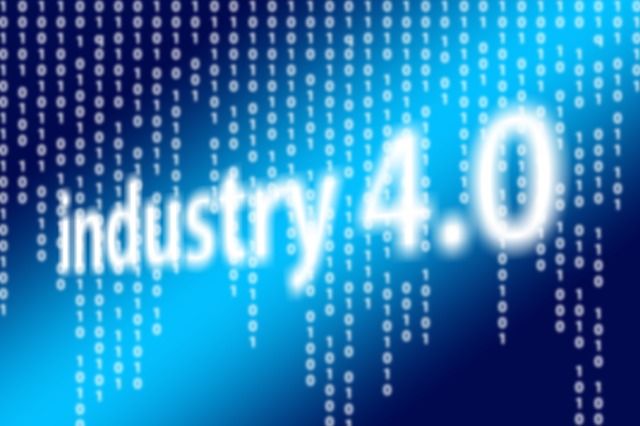- 06 Apr 2018 12:23
#14903629
 industry-2692453_640.jpg (41.41 KiB) Viewed 9097 times
industry-2692453_640.jpg (41.41 KiB) Viewed 9097 times
Revolution means a drastic and radical change. Revolutions took place in the course of the historical development of mankind, when new technologies and new ways of perception of the world caused fundamental changes in economic systems and social structures. Since history is used as the coordinate system, the suddenness of such changes can be formed over the years.
The first radical shift in the way of human life the transition from gathering to farming occurred ten thousand years ago due to domestication of animals. The agrarian revolution was built on connecting the power of animals and people in order to ensure production, transportation and communication. Gradually, the efficiency of food production increased, stimulating population growth and ensuring the viability of large settlements. This has led to urbanization and urban growth over time.
After the agrarian revolution, a number of industrial revolutions began in the second half of the XVIII century. They were milestones on the way from the use of muscle power to mechanical energy, which led to today's historic moment, when in the fourth industrial revolution production is developing at the expense of human cognitive activity.
The first industrial revolution lasted from 1760 to 1840. Its starting mechanism was the construction of Railways and the invention of the steam engine, which contributed to the development of mechanical production. The second industrial revolution, which began at the end of XIX and lasted until the beginning of XX century, caused the emergence of mass production due to the spread of electricity and the introduction of the conveyor. The third industrial revolution began in the 1960s. Usually it is called a computer or digital revolution, as its catalyst was the development of semiconductors, the use in the sixties of the last century, large computers in the seventies and eighties, personal computers and the Internet in the nineties.
Taking into account the various definitions and scientific arguments used to describe the first three industrial revolutions, I believe that today we are at the origin of the fourth industrial revolution. It began at the turn of the new Millennium and is based on the digital revolution. Its main features are "ubiquitous" and mobile Internet, miniature production devices (which are constantly getting cheaper), artificial intelligence and learning machines.
Digital technologies based on hardware and software and networks are not new, but every year moving farther away from the third industrial revolution, are becoming more advanced and integrated, causing the transformation of society and the global economy. That is why mit professors Eric Brynjolfsson and Andrew McAffee wittily called this period the "second machine age," using this expression in the title of their book, published in 2014. In it, they argue that the world is on the brink of an epidem-like explosion, in which the effects of these digital technologies will manifest themselves in all their glory in automating and creating unprecedented things.
In Germany there is a discussion of "Industry 4.0". Born in 2011 at the Hanover fair, the term was intended to refer to a process of fundamental transformation of global value chains. By spreading the technology of smart factories, the Fourth industrial revolution creates a world in which virtual and physical systems of production flexibly interact with each other at the global level. This ensures full product adaptation and the creation of new operating models and systems.
But the Fourth industrial revolution is not only about smart and interconnected machines and systems. Its spectrum of action is much wider. At the same time, there are waves of further breakthroughs in various fields: from decoding information recorded in human genes to nanotechnology, from renewable energy resources to quantum computing. It is the synthesis of these technologies and their interaction in physical, digital and biological domains that make up the fundamental difference between the fourth industrial revolution and all previous revolutions.
During this revolution, the latest technologies and universal innovations are spreading much faster and much more extensively than during its predecessors, which, incidentally, are still continuing in some countries of the world.
In anticipation of the second industrial revolution is the population of 17 world territories, as about 1.3 billion people still do not have access to electricity.
About half of the world's population, or 4 billion people, expects a third industrial revolution, most of them living in developing countries without access to the Internet.
At the same time, it took almost a hundred and twenty years to spread the spindle (the symbol of the first industrial revolution) outside Europe. By contrast, the Internet has spread worldwide in less than a decade.
Author: Klaus Schwab (C) fourth industrial revolution
The first radical shift in the way of human life the transition from gathering to farming occurred ten thousand years ago due to domestication of animals. The agrarian revolution was built on connecting the power of animals and people in order to ensure production, transportation and communication. Gradually, the efficiency of food production increased, stimulating population growth and ensuring the viability of large settlements. This has led to urbanization and urban growth over time.
After the agrarian revolution, a number of industrial revolutions began in the second half of the XVIII century. They were milestones on the way from the use of muscle power to mechanical energy, which led to today's historic moment, when in the fourth industrial revolution production is developing at the expense of human cognitive activity.
The first industrial revolution lasted from 1760 to 1840. Its starting mechanism was the construction of Railways and the invention of the steam engine, which contributed to the development of mechanical production. The second industrial revolution, which began at the end of XIX and lasted until the beginning of XX century, caused the emergence of mass production due to the spread of electricity and the introduction of the conveyor. The third industrial revolution began in the 1960s. Usually it is called a computer or digital revolution, as its catalyst was the development of semiconductors, the use in the sixties of the last century, large computers in the seventies and eighties, personal computers and the Internet in the nineties.
Taking into account the various definitions and scientific arguments used to describe the first three industrial revolutions, I believe that today we are at the origin of the fourth industrial revolution. It began at the turn of the new Millennium and is based on the digital revolution. Its main features are "ubiquitous" and mobile Internet, miniature production devices (which are constantly getting cheaper), artificial intelligence and learning machines.
Digital technologies based on hardware and software and networks are not new, but every year moving farther away from the third industrial revolution, are becoming more advanced and integrated, causing the transformation of society and the global economy. That is why mit professors Eric Brynjolfsson and Andrew McAffee wittily called this period the "second machine age," using this expression in the title of their book, published in 2014. In it, they argue that the world is on the brink of an epidem-like explosion, in which the effects of these digital technologies will manifest themselves in all their glory in automating and creating unprecedented things.
In Germany there is a discussion of "Industry 4.0". Born in 2011 at the Hanover fair, the term was intended to refer to a process of fundamental transformation of global value chains. By spreading the technology of smart factories, the Fourth industrial revolution creates a world in which virtual and physical systems of production flexibly interact with each other at the global level. This ensures full product adaptation and the creation of new operating models and systems.
But the Fourth industrial revolution is not only about smart and interconnected machines and systems. Its spectrum of action is much wider. At the same time, there are waves of further breakthroughs in various fields: from decoding information recorded in human genes to nanotechnology, from renewable energy resources to quantum computing. It is the synthesis of these technologies and their interaction in physical, digital and biological domains that make up the fundamental difference between the fourth industrial revolution and all previous revolutions.
During this revolution, the latest technologies and universal innovations are spreading much faster and much more extensively than during its predecessors, which, incidentally, are still continuing in some countries of the world.
In anticipation of the second industrial revolution is the population of 17 world territories, as about 1.3 billion people still do not have access to electricity.
About half of the world's population, or 4 billion people, expects a third industrial revolution, most of them living in developing countries without access to the Internet.
At the same time, it took almost a hundred and twenty years to spread the spindle (the symbol of the first industrial revolution) outside Europe. By contrast, the Internet has spread worldwide in less than a decade.
Author: Klaus Schwab (C) fourth industrial revolution









 - By wat0n
- By wat0n - By Tainari88
- By Tainari88